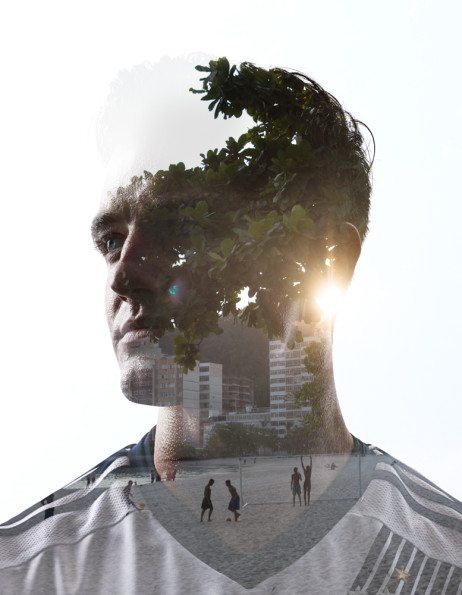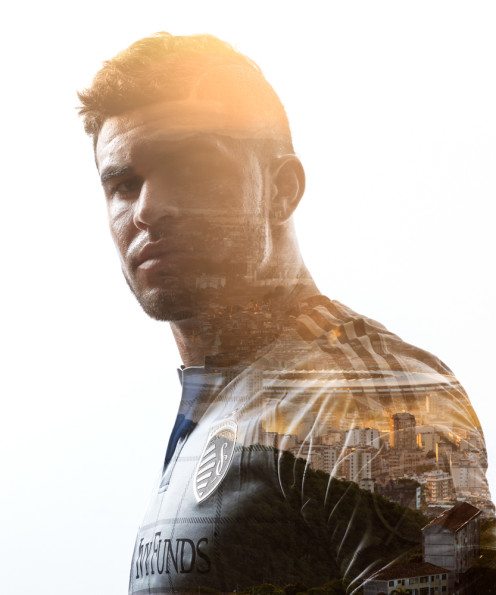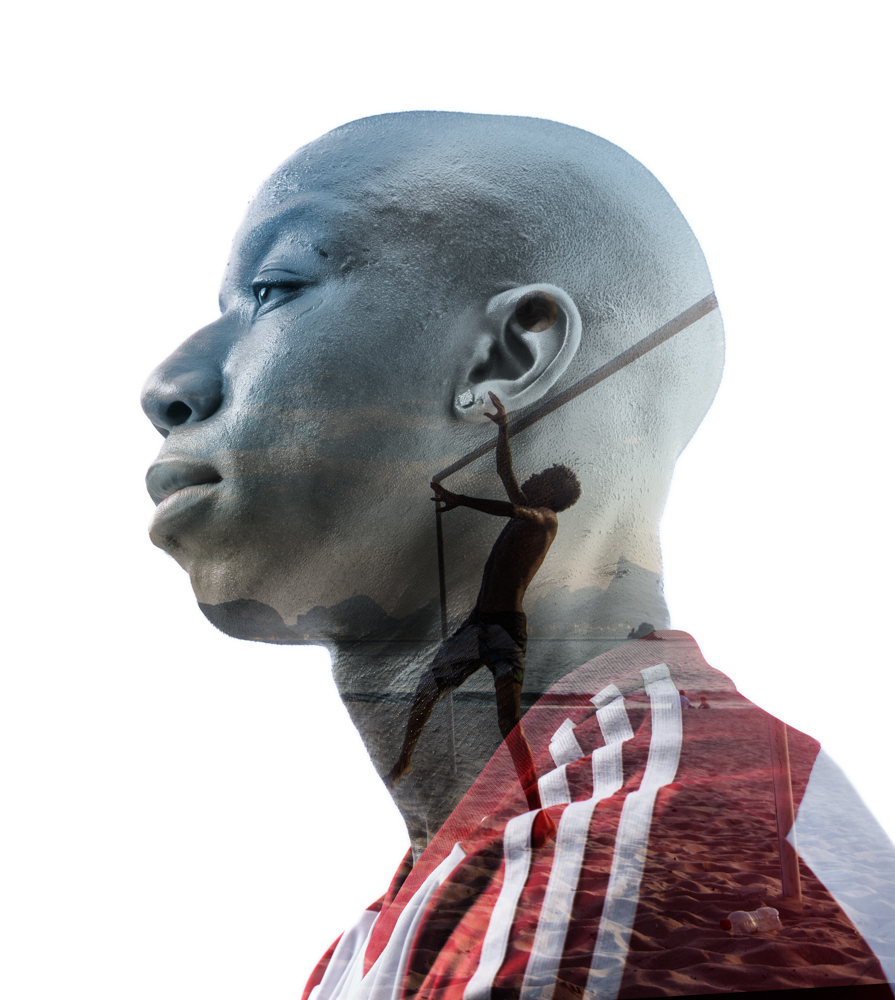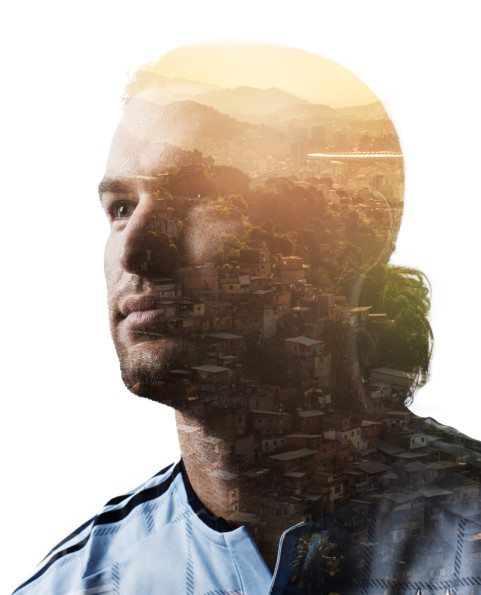Last Updated on 07/23/2015 by Chris Gampat
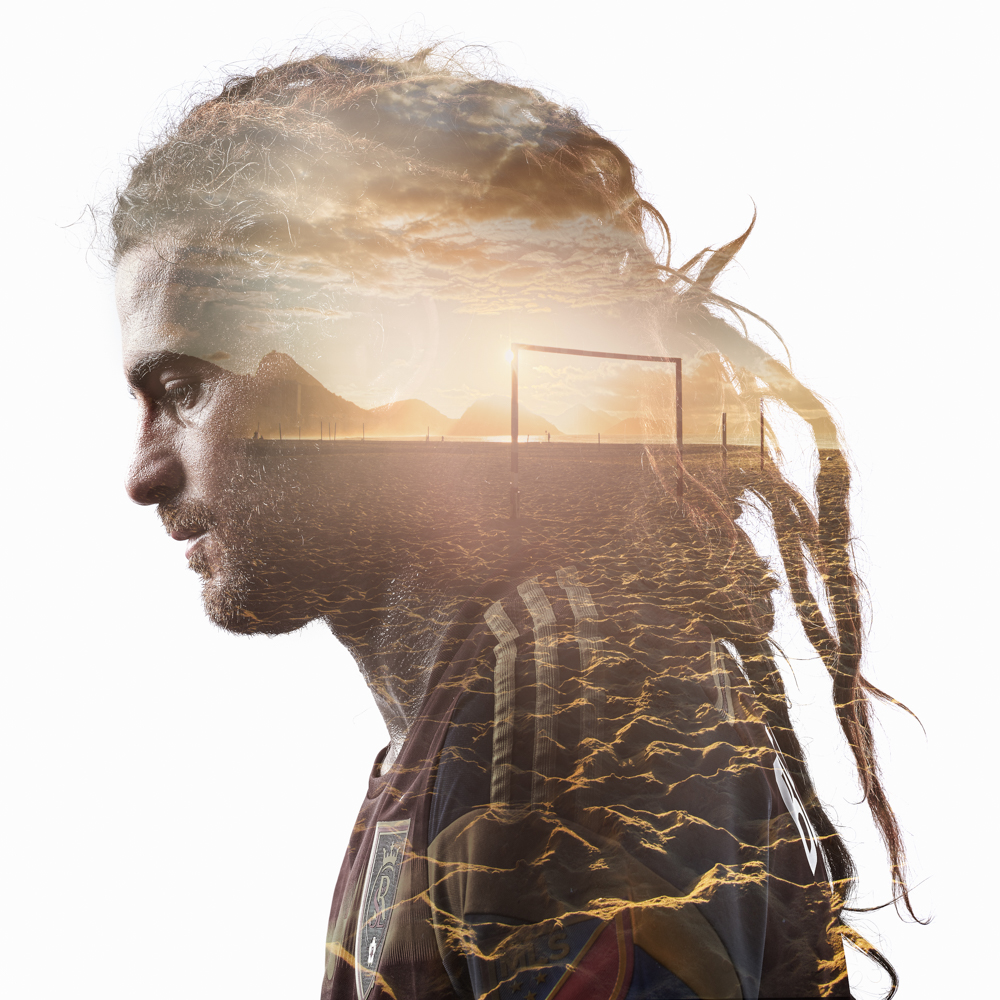
All images by Tim Tadder. Used with permission.
Photographer Tim Tadder is best known for creating powerful portraits and high action intense sports imagery–and that’s why his clients are Adidas, Under Armor, Sony and many more. Based in Southern California, he was raised in Baltimore where his father was a team photographers for the Baltimore Orioles and Baltimore Colts.
He recently posted about a project involving creating double exposures of MLS athletes. Like many other photographers, he says that the toughest part of this type of photography is the concepting and ensuring that the images are effective.
We talked to Tim about his start as a photographer and his creative thought process when doing the project.
Phoblographer: Talk to us about how you first got into photography.
Tim: My Father was a commercial photographer in Baltimore, Maryland while I was growing up. I was raised around a studio, it was a natural fit, but I never pursued it as a career until I was 29 years old. I did a lot of other things before realizing that I had a certain natural vision and it was something I really started to enjoy as a hobby in my twenties, so after 5 years as a high school teacher I decided to give it a go. I first pursued photojournalism earning a master’s degree in visual communication, and later evolved into a commercial ad photographer.
Phoblographer: What got you into sports photography and portraits?
Tim: I think that two things help here, my father was the team photographer for the Baltimore Orioles and Baltimore Colts, I grew up around him shooting athletes, so the subject matter was very familiar to me, but I was also an athlete and was interested in sports, so the subject matter was something that I was personally interested in exploring.
Phoblographer: Where did the idea and inspiration for the double exposures come from?
Tim: I would say this started with different projects I saw on Behance. I draw a lot of inspiration from projects I see on this site. It’s a very inspiring place to spend time. I then saw it used in the first season of HBO’s True Detective, and at that point I started to play around with it myself on various concepts. When the MLS project came up I knew it was something that I wanted to shoot for and was excited to finally have a unique spin on the technique. I had seen it done with nature, business and True Detective, but I found nothing in the sports world so I figured it was a good new way to portray the mental side of the athlete. I intend on doing more of these projects and have already been contacted by a few clients that wasn’t to put this in play.
Phoblographer: What made you choose the specific patterns for the athletes? That is, what were you trying to convey artistically?
Tim: The inner thoughts (inside exposures) were scenes I shot in Brazil during a shoot for the World Cup. I really feel that the great Doubles have a sense of light on the inside that fills the shadow needed for the effect. It makes the image deeper and more thoughtful. So I pulled these textured environments of fields, beach goals, and stadiums and built the images around them. I love texture in images, its a critical part of photography to provide dimensionally to the 2-d medium. The doubles exposures can do this quite well, and if you have texture on top of good compositional techniques the images have impact. Artistically my goal was to drive an audience towards the mental side of sport and the inner mind play that make top athletes great. We are often tasked to capture a “look” of that mental toughness, with these images you have the ability to explore an inner visualization.
Phoblographer: How much of this was done in camera/post-production?
Tim: The effect was done in post. The portraits were shot with high contrast on white. the plates were added in post.
Phoblographer: Do you feel this becoming a series with other types of athletes?
Tim: It already has I have done it a few times since I created these and I have some shoots coming up where I will be executing similar concepts.
Phoblographer: When photographing the athletes, how did you go about explaining the idea and concept to them?
Tim: I do not really get deep into concept talk with athletes I instead just try to communicate with them as a normal human and I try to relate to them on a personal level. Make them feel comfortable with me and my professionalism and the rest seems to fall into place. I am very direct and focused and I think athletes like that type of communication.
Phoblographer: Double exposures are a really big trend in the photo world right now. What do you think is the toughest part about creating them?
Tim: Concepts. Good story telling concepts make the doubles effective. Putting two images together is nothing with a clear visualization of how the two images marry together. These are very clear as to what we are communicating. Effective images are great communicators of concept. So for doubles to work they have to be more than eye candy.


